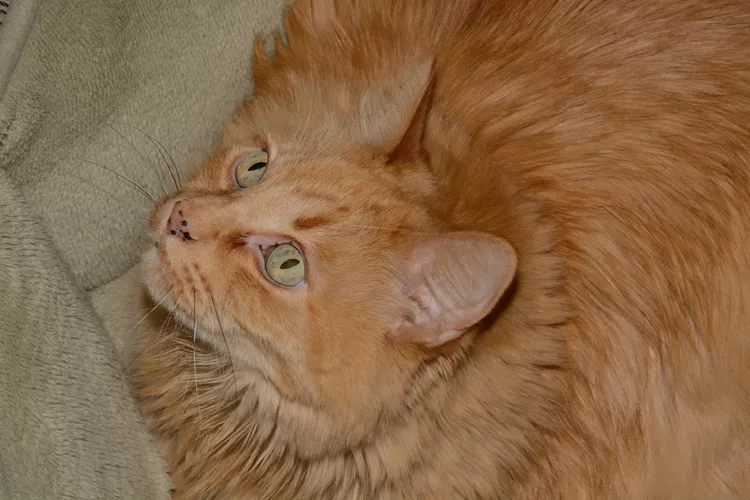
A new spot that pops up on your cat usually causes worry, but the spots can often be easily explained. The most common reason for these dark spots is lentigo, a genetic condition in which the number of epidermal melanocytes increases.
In the case of flat brown or black spots that suddenly appear on your orange cat’s nose, lips, and eyelid margins, you may be worrying over nothing. Let’s find out what these spots are and whether you should be concerned.
The most common reason for these dark spots is lentigo, a genetic condition in which there is an increase in the number of epidermal melanocytes. As these pigment-producing cells multiply, small black or brown spots appear on your cat’s face.
Orange cats are not the only color affected by lentigo. Black spots can also pop up on tortoiseshell, calico, yellow, and flame-point cats. Middle-aged to older cats are most commonly affected, but lentigo can appear in cats as young as a year old.
When lentigo first appears in cats, it often pops up on the lips as tiny dots, before spreading to the eyelids, gums, and nose. As the cat ages, the spots become more widespread and may grow larger. Often, a small cluster of spots will grow together to form a large patch of pigment.
Small lesions may appear close together, discoloring a larger area. They are either brown or black, small in size, and usually flat, but they may appear raised. With a clearly defined border, there is no redness or other skin changes surrounding the lesions. Cats also appear to be comfortable with these “freckles,” as they do not seem to be itchy or irritating.
While freckles are associated with sun exposure in people, the exact cause of lentigo in cats is unknown. The appearance of these feline freckles does not seem to coincide with increased sun exposure.
Regardless of the underlying trigger, lentigo spots result from pigment-producing cells called melanocytes making more melanin than the surrounding skin. It is thought that the gene that codes for orange coat color is unstable and reverts back to its more natural "non-orange," dark gene over time, but this theory has not been confirmed.
Veterinarians often diagnose lentigo based on a thorough physical exam, the presenting clinical signs, and by checking for any other health conditions. Occasionally, lentigo spots can appear similar to melanoma, so your veterinarian may take a fine needle aspirate of a suspicious spot to search for cancerous cells under the microscope.
Lentigo is not a form of cancer, nor will it grow to become cancer. The only concern is that lentigo spots can mask melanoma spots, which makes routine veterinary exams critical for monitoring. If you notice a raised black spot on your cat, contact your veterinarian, as raised spots tend to be cancerous more often than flat spots.
Since lentigo is a benign, cosmetic condition, like human freckles or age spots, there is no need for treatment—simply enjoy your kitty’s freckles.
While the black spots caused by lentigo can be startling, they are the most benign condition that appears as small black dots. Other similar-appearing medical issues that can create health problems include:
These blood-sucking parasites appear as small black dots in your cat’s fur and may be difficult to detect if she is an excellent groomer. As the fleas feed on your cat, they will pass digested blood, also known as flea dirt or excrement, which will appear as minuscule black flecks on your pet’s skin and fur.
Combing your cat with a fine-toothed flea comb is the best way to diagnose a flea issue, as these special combs are designed to pull fleas, eggs, and dirt off your pet.
While the exact cause of feline acne is unknown, it is a fairly common skin condition in cats. Appearing as black dots on the chin, feline acne may also progress to red, inflamed pustules that can rupture and ooze.
Proper hygiene is a must for cats with acne, especially regarding food and water dishes. Avoid plastic dishes and switch to ceramic, stainless steel, or glass instead. Feline acne can be an occasional flare-up or a chronic condition that requires rigorous hygiene protocols.
Cats, unlike people, rarely develop melanoma because of excessive sun exposure. Melanoma refers to the pigment melanin, which is produced by certain cells in the body. With the malignant form of melanoma, these pigment cells grow out of control, and are most likely to affect the skin, eyes, or mouth of cats.
Several characteristics are common among cats with melanoma:
If you're concerned about a spot on your cat, especially if it changes in size or is raised or tender, contact your veterinarian to schedule an appointment. There’s a good chance that your cat’s black spot may simply be lentigo, but it’s better to be safe than sorry.

Cute Pictures & Facts About Calico Cats & Kittens
Learn fascinating facts about calico cats, including photos, the genetics behind this color combination, and common folklore and traditions.
How to Prevent Cat Separation Anxiety During Vacations
Discover why cats develop litter box problems and cat behavior problems when you go on vacation and what you can do about it to help them.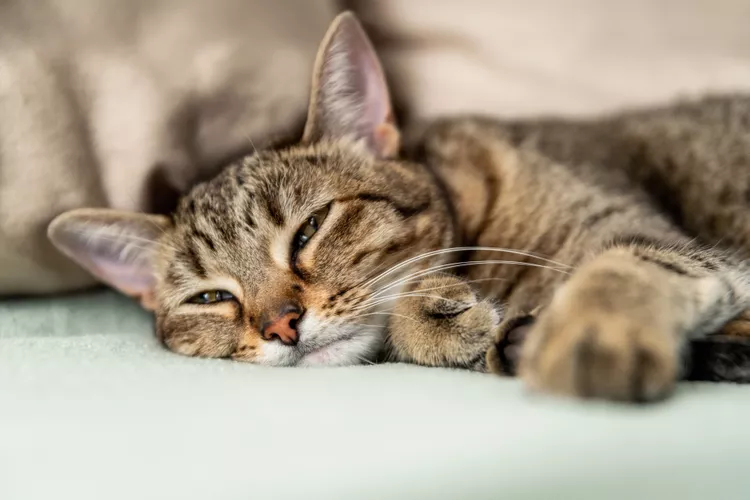
Cat Behavior Changes That Might Mean Something's Wrong
Cats' behavioral changes may indicate problems—or they may mean nothing at all. Explore causes of odd behavior and what to do about them.
Lhasa Apso: Dog Breed Characteristics & Care
The Lhasa apso is an ancient breed from Tibet that was bred to be a watchdog. Learn about its history, health, exercise needs, and more.
Reasons Why Dogs Run Away and How to Stop It
Dogs can escape, especially if they’re bored and not properly contained. Here are some techniques for stopping your dog from running away.
Can Dogs Get Depression? How to Help Your Sad Dog
Can dogs get depression? Learn about the signs of depression in dogs and find out how to help your sad dog.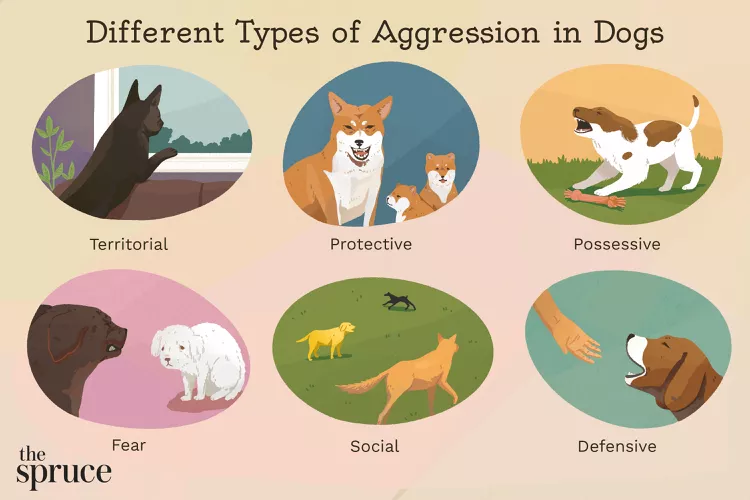
How to Stop Aggression in Dogs
Dog aggression can be a serious behavior issue for pet owners. Learn how to stop aggression in dogs before someone gets hurt.
How to Stop Your Dog From Growling
A growling dog can soon become even more aggressive. Reduce the noise and potential for a dangerous situation with some of these techniques.
Why Do Dogs Dig Holes? How to Stop Your Dog from Relandscaping Your Yard
Dogs have been digging holes for centuries and for many reasons. Whether they’re bored or want to cool off in the dirt, here are the top reasons why dogs dig holes.
Dog Treat Varieties
Learn about the different types of dog treats on the market and decide which are best for your dog.
Can Dogs Eat Asparagus?
Dogs can eat asparagus, provided the vegetable is cooked plain and cut up for them. Seasonings, salt, and butter make it unhealthy for dogs.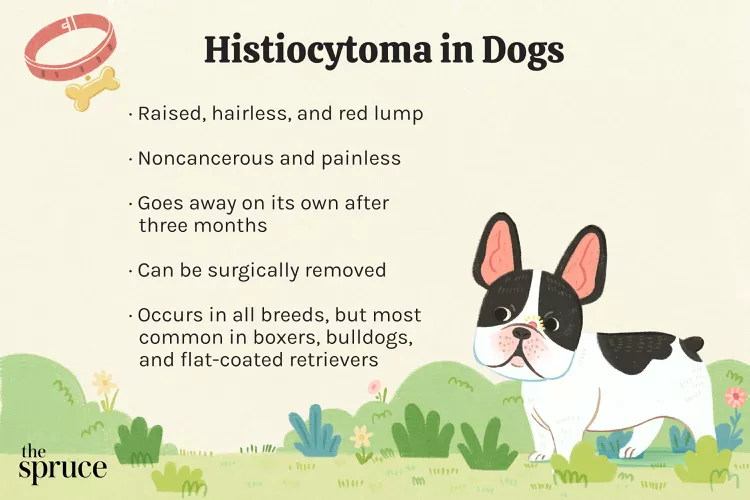
Histiocytomas in Dogs
A histiocytoma is a type of benign (non-cancerous) skin lump that usually affects young dogs. Learn the causes, treatment, and prevention.
Why Is My Dog’s Eye Swollen?
If your dog's eye is swollen, she may need veterinary attention. The inflammation could be caused by allergies, an injury, or even a tumor.
Common Bugs and Parasites Found on and Inside Dogs
Learn about common types of parasites in dogs. Find out how to treat and prevent parasites to keep your dog, your family, and yourself safe.
Exploring the Different Types of Pet-Friendly Beaches
Are you looking for pet-friendly beaches? Learn about the different types of pet-friendly beaches, their locations, and tips for visiting them with your pet.
10 Obscure, Little-known Canine Facts in Honor of National Dog Day
With National Dog Day upon us, it's time to celebrate everything about our favorite pets—even the weirder stuff. Here are 10 obscure facts about dogs you probably didn't know.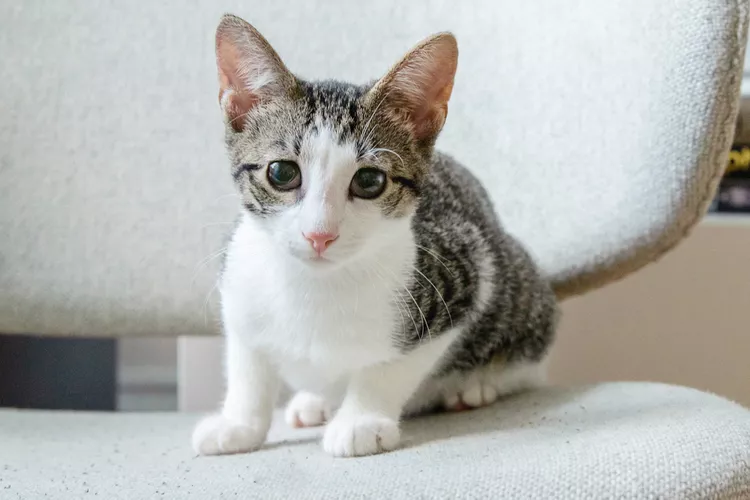
Kitten Development From 3 to 6 Months Old
Kittens grow and change a lot during their first year. Find out what happens between the ages of three months and six months old.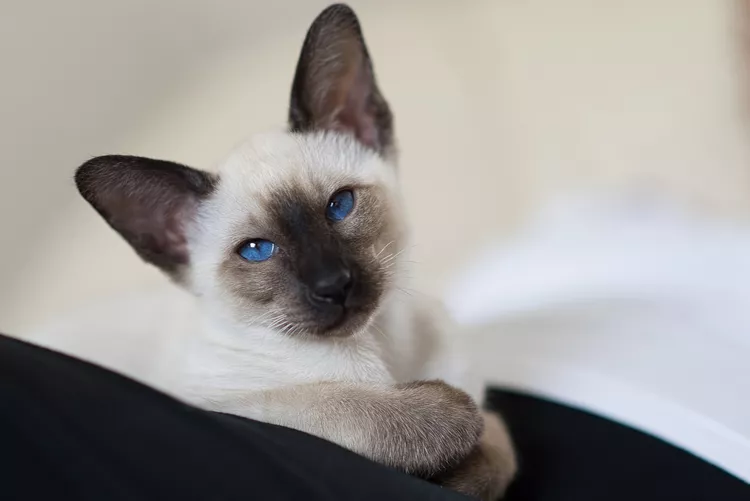
95 Siamese Cat Names
Our list of Siamese cat names has diverse and fun options to help you choose the ideal moniker for your elegant and lovable feline companion.
What to Buy for Your New Cat: A List of Essentials
Before you bring your new cat or kitten home, there are a number of things to collect or buy so your cat will feel welcomed like a family member.
The 6 Best Cat Nail Clippers of 2024 for a Safe Trim
Clipping your cat's nails can save your furniture and keep your kitty comfortable. We asked veterinarians for their cat nail clipper recommendations.